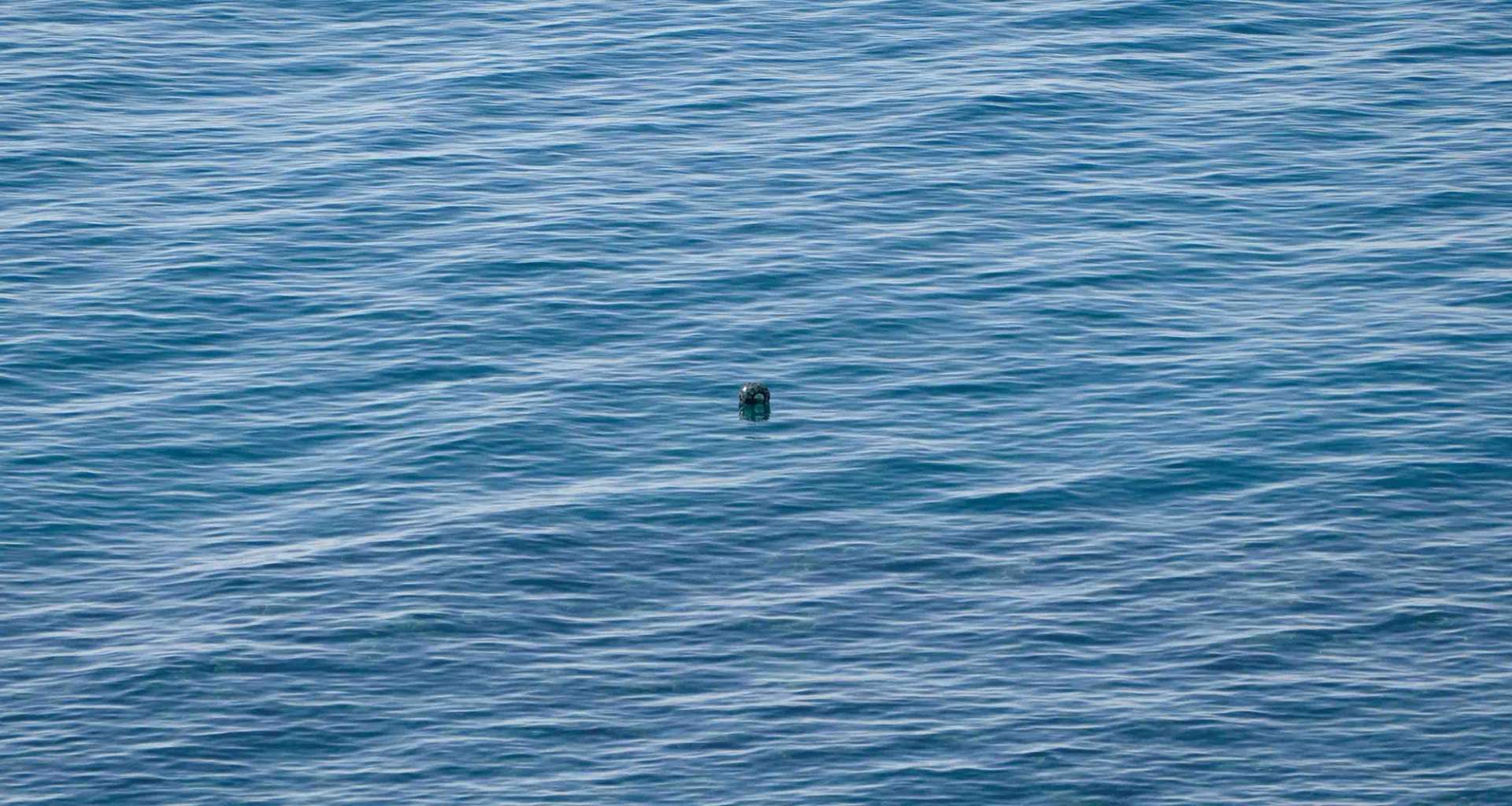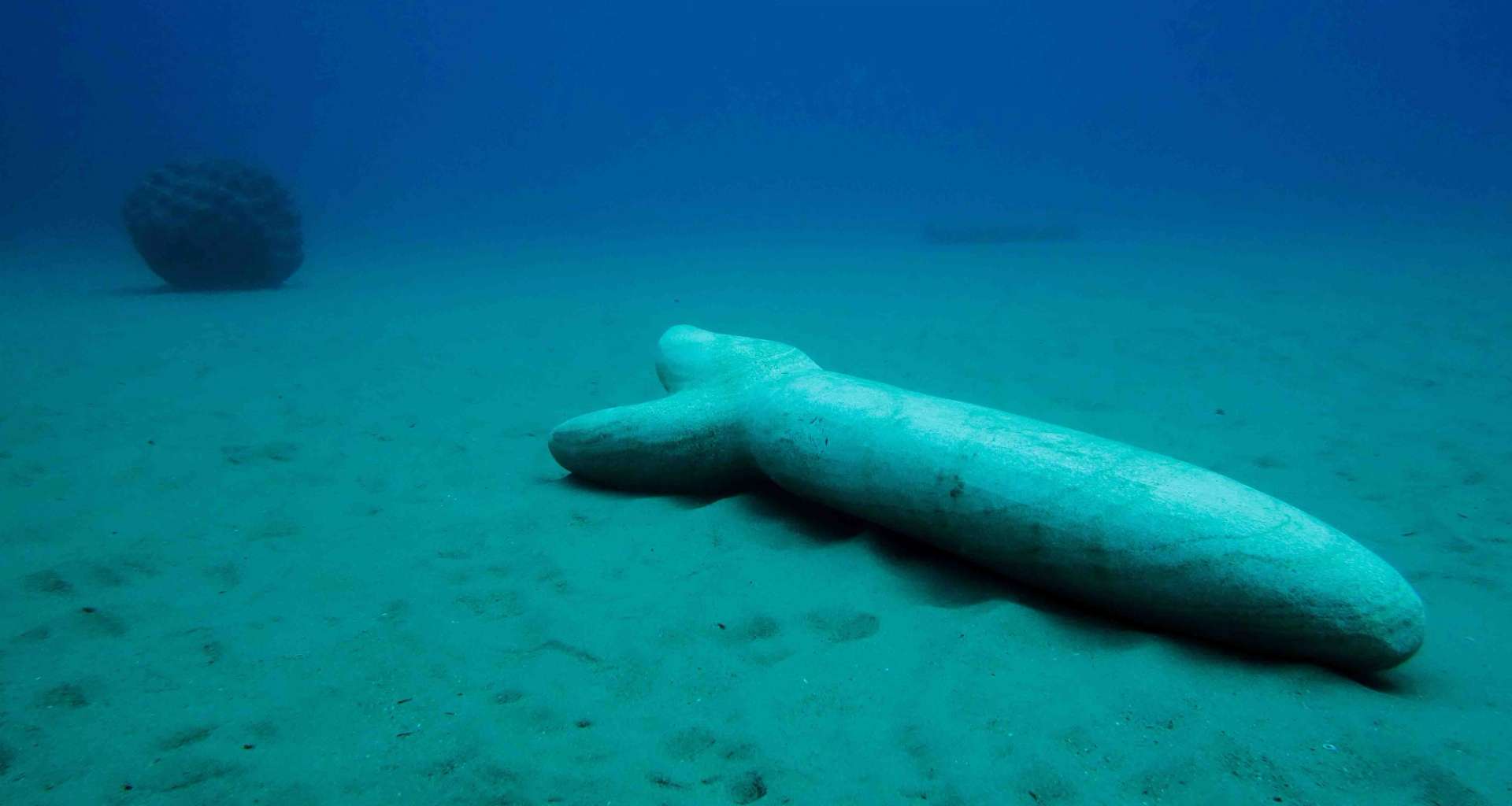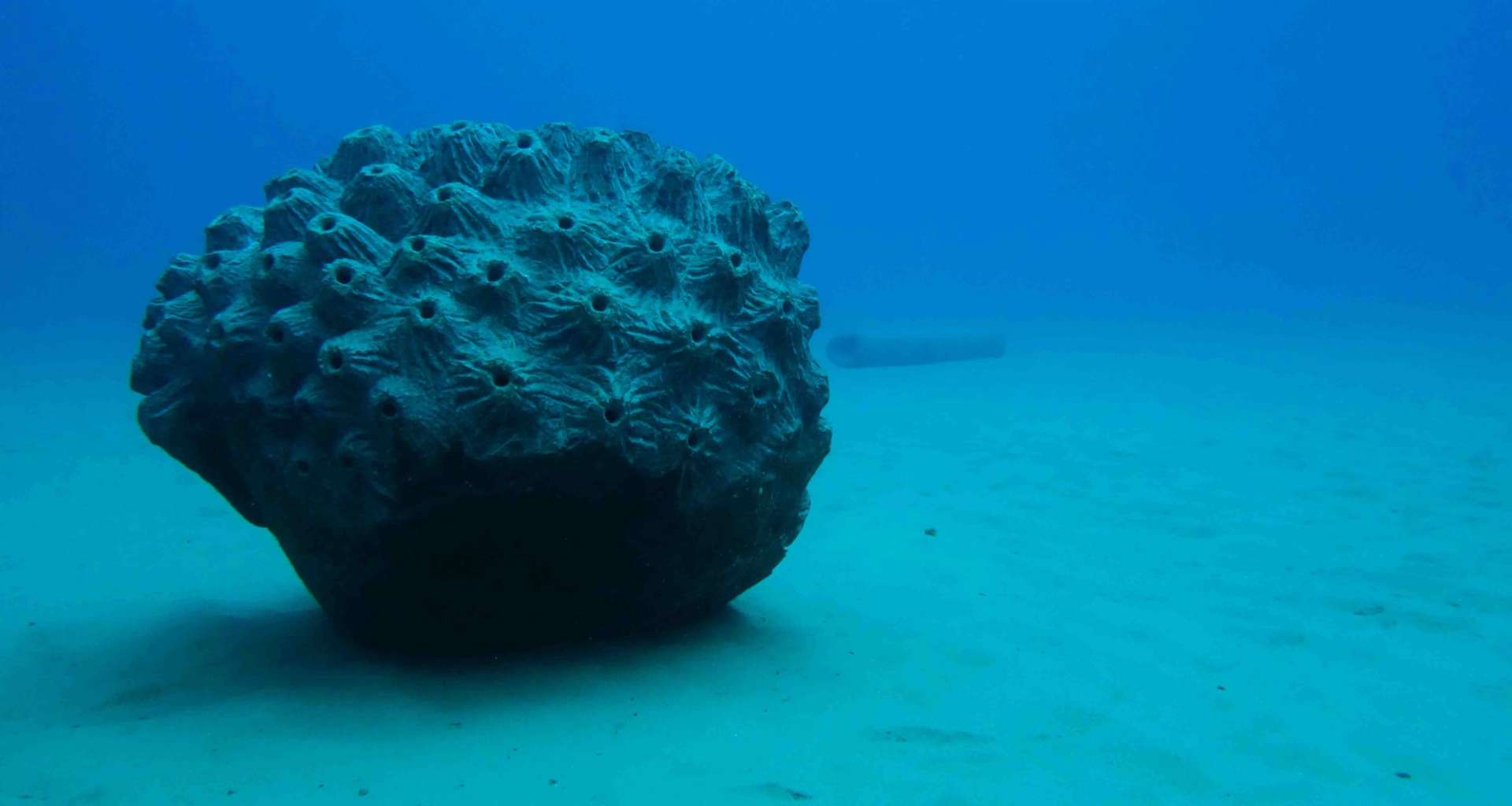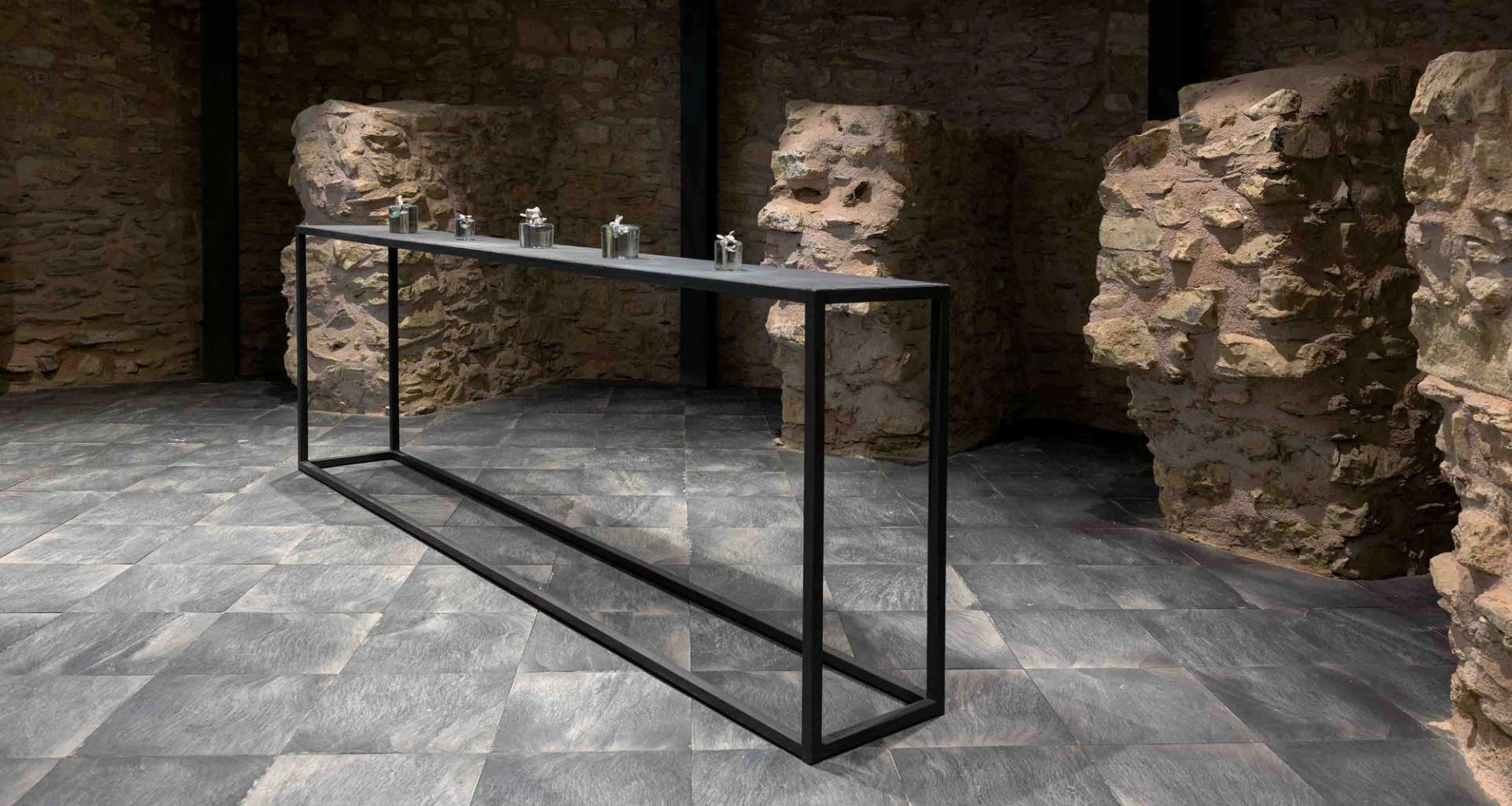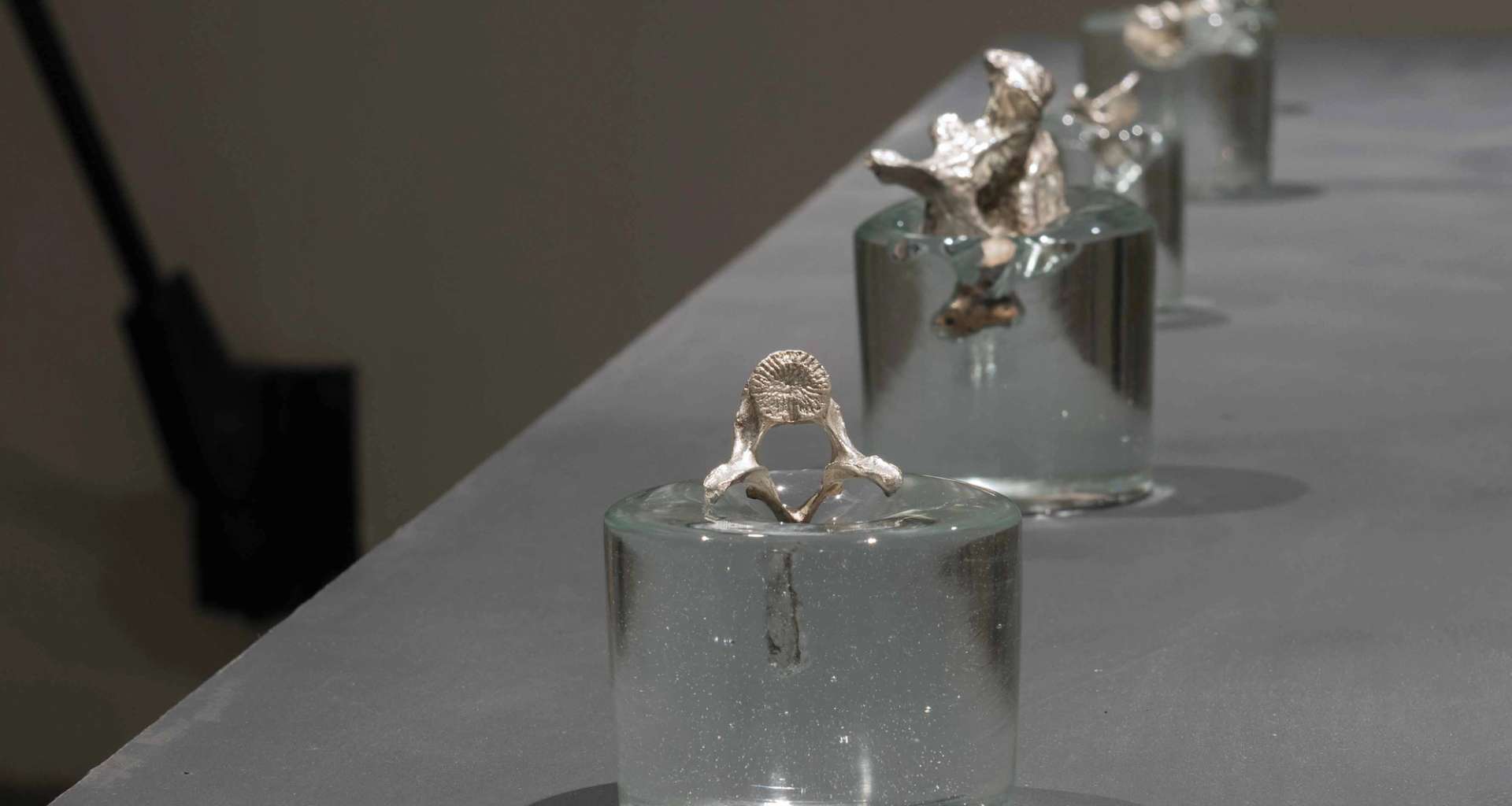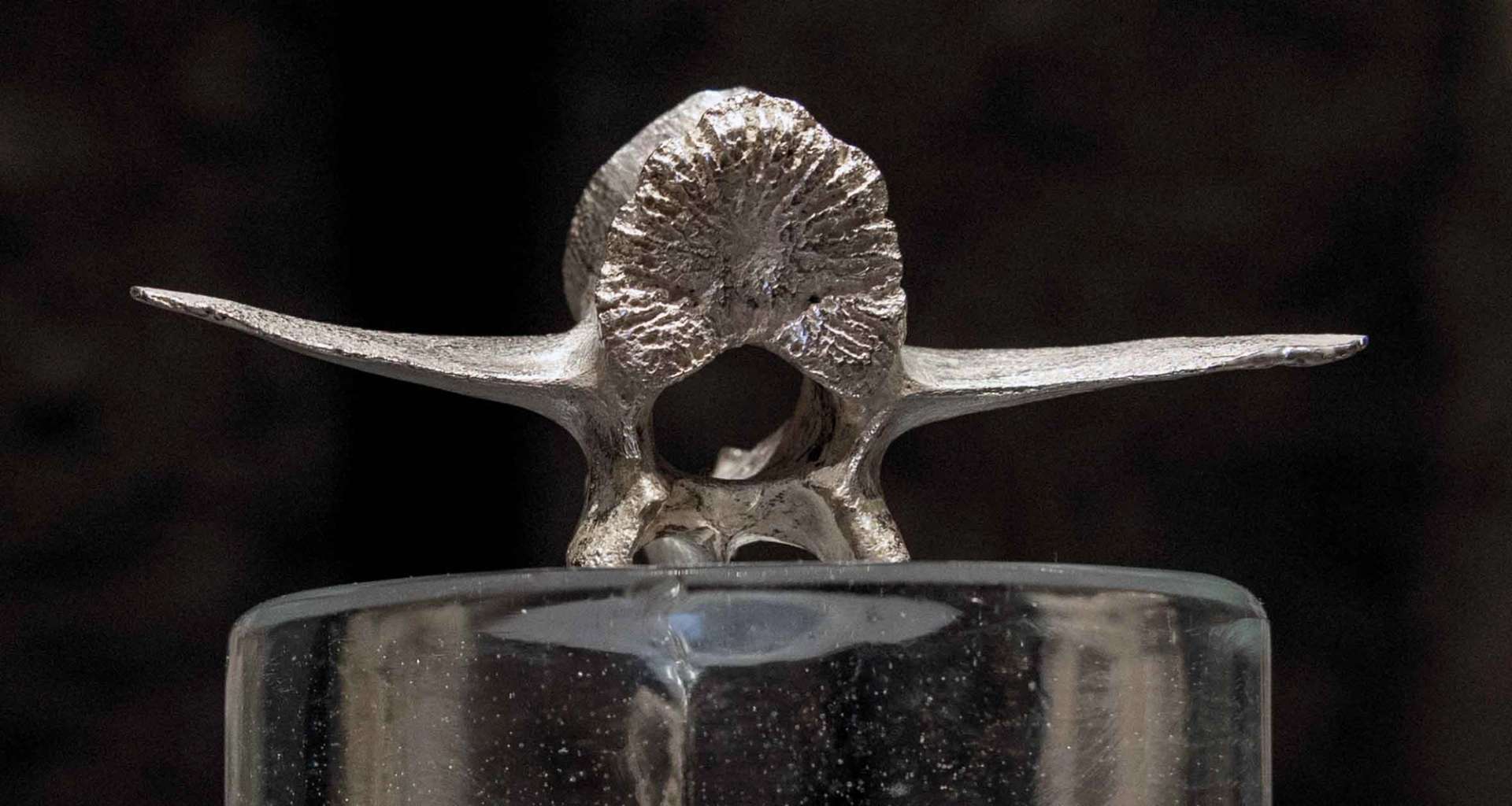Mazzi’s project reflects on the link between the Cervo municipality and its coast; more generally, it explores the link between man and sea. Although indispensable, this connection is often underestimated. Humanity’s very survival depends on the sea. The artist’s work takes shape beginning with the naturalistic peculiarities of a group that’s hugely important for both ecology and marine biodiversity: poriferous organisms, more commonly known as sponges. These organisms filter hundreds of liters of water each day and can perforate rock to obtain the material needed to build their skeleton, which is mainly composed of siliceous structures called spicules. The artist identified four shapes, which she reproduced using the same stone types the sponges use: marble, granite and peperino. The shapes were positioned at about a five-meter depth on the sandy seabed of Cervo’s coast.
I LOOKED AT THE INESCAPABLE LINK BETWEEN HUMANS AND THE SEA, WHICH IS OFTEN UNDERESTIMATED. DIALOGUING WITH RESEARCHERS IN THE AREA, I LET MYSELF BE INSPIRED BY THE SMALLEST FRAGMENTS: SKELETONS OF SPONGES THAT FILTER AND PERFORATE THE ENVIRONMENT THAT SURROUNDS US
The poetics of Elena Mazzi (Reggio Emilia, 1984) concern the relationship between humanity and the environment in which we live, the ways we operate in it, and how we bring about change. Adhering to a predominantly anthropological approach, her analysis investigates and documents both a personal and a collective identity related to a specific territory, giving rise to different forms of exchange and transformation.
THE ARTIST’S WORK TAKES SHAPE BEGINNING WITH THE NATURALISTIC PECULIARITIES OF A GROUP THAT’S HUGELY IMPORTANT FOR BOTH ECOLOGY AND MARINE BIODIVERSITY: PORIFEROUS ORGANISMS, MORE COMMONLY KNOWN AS SPONGES
Surrounded by green hills, protected by towers and sixteenth century walls, for years, Cervo has been listed among “I Borghi più Belli d’Italia” (The Most Beautiful Villages of Italy), with its original medieval village-on-the-sea characteristics still intact. The historical center is pedestrian-only, and artisans’ and artists’ shops line its cobbled streets. The surrounding hills are dotted with ruins of past eras, rich in pine forests and olive groves, with quiet paths crossing every which way. Dominating Cervo is a medieval castle, the centuries-old residence of the Clavesana Marquises. Today it hosts temporary art exhibitions and the Ethnographic Museum of Western Liguria. In the village, ancient noble palaces open their doors onto the “carrugi,’ from which you can admire the portals of the Romanesque oratory of Santa Caterina. And on the Sagrato dei Corallini, the Baroque church of San Giovanni Battista, with its concave facade, stands tall: it’s the village’s most iconic image.
